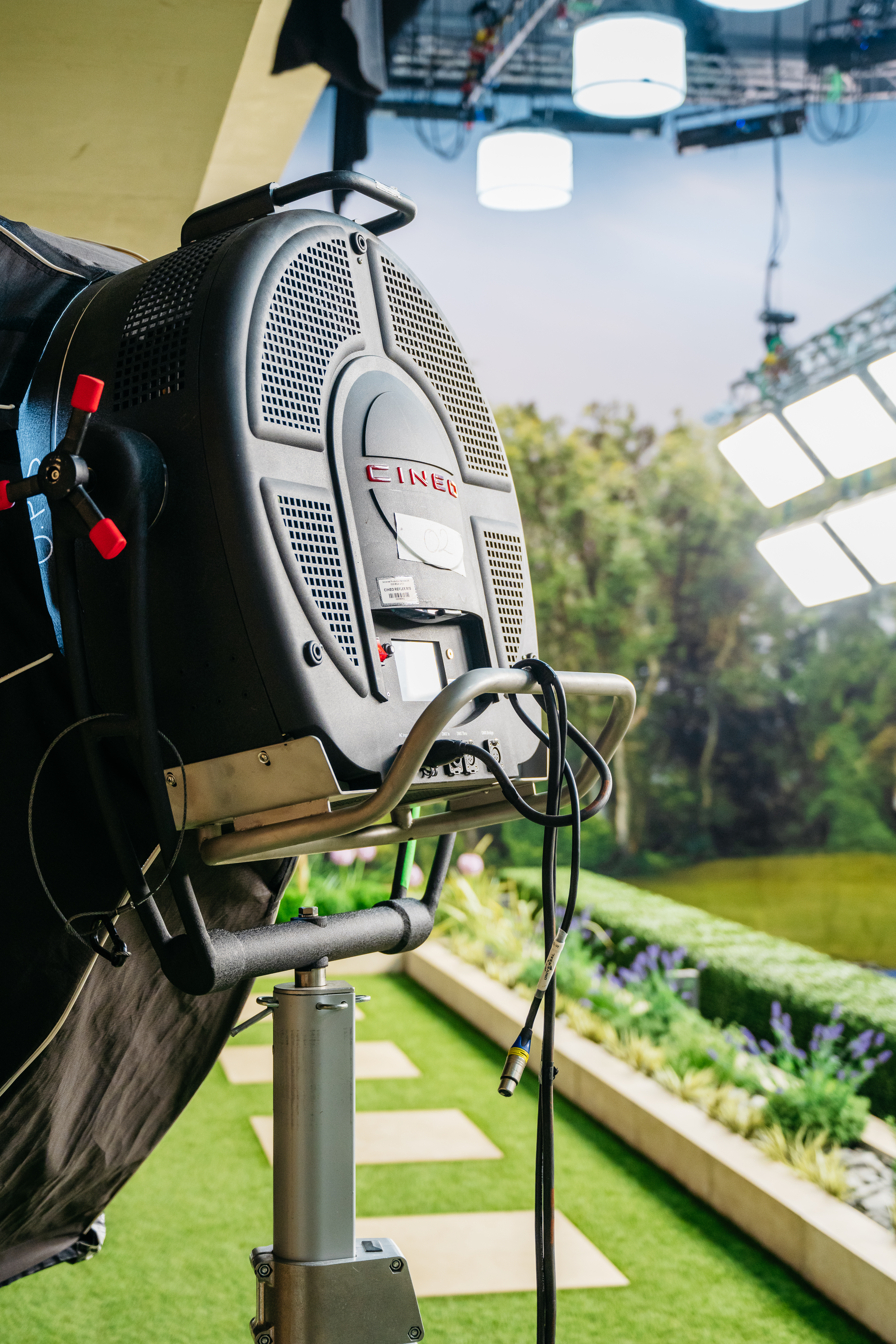Cullum Ross, Gaffer on the upcoming "Man vs. Bee" project for Netflix recently shared some insights on the project.
Did this production present any special lighting, equipment, or design challenges?
Most of the action takes place on a set build of a mansion backing on to a large bespoke Rosco day/night translight. We needed the ability to create a realistic daylight feel through the windows but also on the background beyond. To add to this, the main living space featured large aspect sliding glass doors which meant that most of the 175' rig had to be flown so it was out of vision.
We noticed a hefty amount of LED lights on your gear list - how does using this kind of technology aid in creating the environment?
The current LED fixtures offer a huge technological advantage over conventional lighting with a number of adjustable attributes, low current draw and impressive output. I was particularly impressed by how accurately the Cineo LB800s created and matched different looks. We had limited space on the stage so we needed units capable of producing a high output. Our rig was designed to be as flexible as possible. It incorporated motorized trussing on rolling beam trolleys which could move vertically as well as closer to the set. Having the low profile LB800s enabled us to get within a few feet of the set if required.
How do key decision-making parameters change between setting up your studio block vs. location blocks?
A key consideration in planning our location and stage packages was the ability to match our lighting design in different environments. Our location and studio packages would often carry Reflex R15s, LB800s, Vortexes and Asteras, all of which need remote-control capability when away from the stage data networks. We achieved this using the reliable built-in Lumen radio receivers and a wireless lighting console.
How did you use the Cineo Reflex and the LB800?
We mainly used the LB800s rigged on the motorized trussing to reach through the large aspect windows for our daylight motivation. I later asked our rigging team to build a soft box comprising of 6 LB800s that created a large soft source at the front of the set. The Reflex R15s have been a fantastic source. We originally designed the units to be flown on trussing near the large windows but discovered that the set glass had a tinting that added a darkening effect. We decided to use the Octodome attachment to create large portable soft sources that could be wheeled on to the set.
What is your history with LED lighting in production - do you have some favorite tools?
This is the third narrative production where I've used an almost 100% LED based package. My favorites from past projects are the Astera AX1, Titan and AX3/5 fixtures because of their versatility. I have seen the changes of the technology and development of self-calibrating and high TLCI fixtures. All of this helps to provide an accurate alternative. The innovative design of the Cineo R15; the parabolic reflector paired with a liquid cooled LED array proved to be a real game changer.

Looking into your next projects, where do you see LED lighting technology continuing to support your work?
LED technology has proved to be a reliable and exciting option for all motion picture work. I am interested to see how the LUT parameter develops and whether it could help with closer integration with the camera workflow. The greatest challenge I see with LED lighting is creating a hard light fixture capable of consistently matching the output and brightness of some of the larger HMI, Tungsten and Plasa lights and yet still be color tunable.
How does LED lighting and network driven data management change your workflow on stage and on location.
More now than ever a key requirement of all lighting design is some form of data network infrastructure. LED fixtures offer the ability to change numerous parameters and on large stage productions it is not uncommon to have hundreds of units with thousands of channels in a rig. This necessitates an understanding of lighting control and data networks be they wired or wireless. With the increase of Wi-Fi-enabled devices on set a common problem is wireless traffic management and lighting desk integration.
How do sustainability & carbon offset requirements fit into your production planning?
Where possible, I use the latest technology to create a 100% low energy lighting design from the outset. The film industry has already made huge changes to reduce its carbon footprint but there are still lots of areas for improvement.
What products do you rely on for meeting your sustainability initiatives, particularly when on location?
For the location work on my last drama we managed to run entirely on battery power. This was a combination of Voltstacks and fixtures with onboard batteries. I'm interested to see how a large portable BEV of 200kWH+ or a battery with more energy density could potentially replace a diesel generator on stage. The challenge is the additional cost of the technology and productions committing to investing in it to drive change.
What kinds of challenges have you faced in a COVID production era?
As productions restarted last Spring there was a huge shortage of equipment and lighting crew. Universal Production Services UK were the only production service able to meet and supply our lighting kit requests. I understand that in the US, Universal run training sessions to encourage and develop new entrants to the industry. I'm interested to know if that is the case in the UK and if not whether it is something Universal could develop.
What are your primary deciding factors when picking a production service partner?
Our service relationship with Universal Production Services UK was key and we really valued the technical knowledge, friendly team and excellent communication.
Did you have special requests that were (or were not) able to be fulfilled?
We had some last-minute changes that led to some requests for specialist fixtures. We were relieved to hear that these could be delivered asap.
How was your experience working with Universal Production Services UK?
My Asst. Chief LX, Lee Johnson managed most of our requests and relationship. Ben Taylor, our account manager at Universal at Elstree was fantastic and went above and beyond to help us during production. I would gladly reach out to Universal for my next projects. They were friendly, technically versed and excellent communicators. I'd like to see Universal playing a bigger role in the attraction and development of new entrants to the industry.
